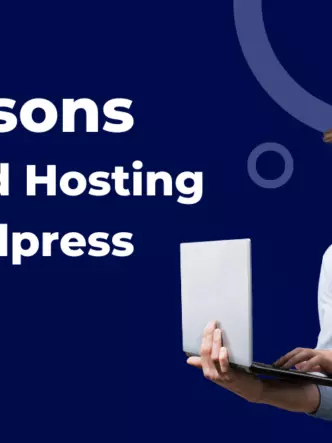Digital asset management software comes in many forms. Find out which one is the best for your business.
Every organization needs to keep track of its digital assets. As your team and its needs grow larger over time, a more robust system for sharing, organizing, and collaborating on these assets becomes necessary.
If you keep all of your business images on a Google Drive folder, it’s only a matter of time before a complicated web of permissions makes it hard for authorized users to gain access. You might end up keeping videos and images in separate places, which can only complicate things more.
There comes a point when every growing business deploys a solution designed to keep their media files (and permissions) neatly organized and arranged in clear categories. This enables business growth through improved collaboration and streamlined partnerships.
DAM: Digital Asset Management
Digital asset management (DAM) solutions are the systems that enterprises use to consolidate and manage their images, videos, and other media.
The DAM system acts as a central repository for the media your company uses for digital marketing, print advertising, outdoor billboards, conferences, trade shows, and even TV commercials. It’s your one-stop solution for finding, hosting, managing and enhancing media assets for use throughout your organization and beyond.
These systems typically share some important features:
-
-
- Robust Metadata Management. Metadata refers to tags and labels you use to categorize data. Since DAM systems are designed to handle large volumes of media assets, users need to be able to find the data they’re looking for easily. Metadata features make that easy, reducing the time and effort that goes into finding the assets you need.
- Versioning and Duplicate Control. Media assets often need to exist in multiple formats at once. Sometimes they need slight modifications. Over time, this makes keeping track of new versions and duplicates of your files difficult. Good DAM solutions solve this problem by automatically versioning tracked assets.
- Collaboration Features. Task management and collaboration tools are an important part of the value that DAM solutions offer to marketers and their colleagues. Being able to capture, reference, and store conversations helps keep the entire team on track.
- Sharing and Distribution Capabilities. Storing video and image files is important, but those files only gain value when they are used correctly. DAM systems help businesses utilize their media assets in multiple ways, like linking, embedding, and sharing securely with external partners
- Support for Third-Party Integrations. Your DAM system should make your digital media workflow simpler, not make them more complicated. Third-party integrations with systems like Sitecore, Microsoft Office, Salesforce, and more ensure you can do business your way – instead of having to change things to accommodate your DAM.
- Enhanced Security. Secure platforms keep your assets secure from unauthorized access and tampering. Video security and permissioning is critical to managing your compliance and cybersecurity policy moving forward.
-
Most professional-level DAM solutions will incorporate these features to some degree. However, marketers and professionals who are looking to implement their first DAM system first have to decide whether the system will be internal or external to their existing infrastructure.
Differences Between External DAM and Internal DAM
In the past, all DAM systems were locally installed applications that lived in an on-premises database. The marketing team would have a small core of IT and design professionals who would configure and maintain the system. This is a textbook example of an internal DAM system.
More recently, cloud-native software vendors have begun offering third-party DAM hosting services that allow organizations to license and use DAM software through the Internet. In this case, the system exists in a managed database outside the organization – an external DAM.
This is particularly attractive for growing companies because all of the technical challenges of implementing and maintaining the system are handled by a third party. You simply pay a fee to use the service.
The software-as-a-service (SaaS) model described here is ideal for high-volume applications like DAM systems because it’s hard to calculate how much volume you will need. It’s difficult to predict how many employee-hours you should dedicate to maintaining an internal system, or whether the investment will pay off.
Like many other complex enterprise tools, most organizations that insist on internal DAM solutions play it safe by purchasing more than they need. As a result, they end up paying for services they don’t use. With an external DAM solution, you only pay for the services you use.
Who Uses Digital Asset Management Software?
DAM software is an ideal tool for any organization that needs to keep track of a large number of media files. This is a requirement that the largest enterprises and the smallest businesses all share, but some organizations need a digital asset management system more than others.
Many DAM software users define themselves as one of the following:
- Enterprises. Large enterprises need to keep close track of their digital media assets and streamline collaboration so that employees and third-party partners have access to the data they need, when they need it.
- Healthcare Organizations. Compliance-oriented DAM software helps healthcare organizations maintain image and video security over patient data and prevent unauthorized access.
- Marketers. Marketing teams often need to make multiple versions of the same image, video, or file. Digital asset management cloud storage makes it easier for them to communicate and collaborate on projects.
- Sales Teams. Salespeople rely on marketing assets to drive value through customer interactions. Digital asset management solutions enable quick, easy access to the right asset at the right time.
- Software Companies. DAM software helps organize training, branding, and collaborating in software companies of all kinds. Certain DAM solutions can handle code like a digital media asset as well.
- Online Educators. The e-learning industry is growing, and online educators are looking for streamlined ways to manage ever-increasing volumes of content.
- Publishers. News and media organizations that use content to drive ad income need a robust system for organizing and categorizing their media.
Leveraging DAM Video Hosting Capabilities
When you implement a DAM system in your organization’s workflow, you no longer need to directly upload media-rich assets directly to your web pages. You no longer need to attach videos and images to emails.
Digital asset management video hosting technology allows you to take advantage of cloud storage and send links and embed codes throughout your organization and beyond. This makes it quicker and easier to communicate, collaborate, and send large files through the Internet.
Do You Need Video Security With Your DAM?
Yes. Your choice of DAM software is an integral part of your organization’s cybersecurity and compliance strategy. Professional, high-performance solutions include comprehensive security features designed to prevent unauthorized access without impacting the user experience.
Importance of Securing Digital Assets with DAM Software
Video security is critical to success with digital asset management cloud storage. Cyberattacks continue to become more frequent every year, and many organizations remain unprepared. Video content can contain a wealth of sensitive information, whether in the form of screenshots, customer data, or even employees’ names.
All of these data can become fuel for phishing attempts, which are often the first step towards debilitating ransomware attacks. You cannot secure your business infrastructure without securing video data against unauthorized access.
Cincopa: A DAM Good SaaS Solution
Cincopa is an external and Internal DAM solution that helps organizations manage all their digital assets on one system and provides an enterprise solution for internal communication. It offers comprehensive features for marketers, digital agencies, publishers, educators and more.
Find out how our highly secure digital asset management system will help you boost video security while reducing the amount of time and money you spend on video hosting and collaboration.









